Accept all cookies Accept only essential cookies See our Cookie Notice

About ESA
The European Space Agency (ESA) is Europe’s gateway to space. Its mission is to shape the development of Europe’s space capability and ensure that investment in space continues to deliver benefits to the citizens of Europe and the world.
Highlights
ESA - United space in Europe
This is ESA ESA facts Member States & Cooperating States Funding Director General Top management For Member State Delegations European vision European Space Policy ESA & EU Space Councils Responsibility & Sustainability Annual Report Calendar of meetings Corporate newsEstablishments & sites
ESA Headquarters ESA ESTEC ESA ESOC ESA ESRIN ESA EAC ESA ESAC Europe's Spaceport ESA ESEC ESA ECSAT Brussels Office Washington OfficeWorking with ESA
Business with ESA ESA Commercialisation Gateway Law at ESA Careers Cyber resilience at ESA IT at ESA Newsroom Partnerships Merchandising Licence Education Open Space Innovation Platform Integrity and Reporting Administrative Tribunal Health and SafetyMore about ESA
History ESA Historical Archives Exhibitions Publications Art & Culture ESA Merchandise Kids Diversity ESA Brand Centre ESA ChampionsLatest
Space in Member States
Find out more about space activities in our 23 Member States, and understand how ESA works together with their national agencies, institutions and organisations.
Science & Exploration
Exploring our Solar System and unlocking the secrets of the Universe
Go to topicAstronauts
Missions
Juice Euclid Webb Solar Orbiter BepiColombo Gaia ExoMars Cheops Exoplanet missions More missionsActivities
International Space Station Orion service module Gateway Concordia Caves & Pangaea BenefitsLatest
Space Safety
Protecting life and infrastructure on Earth and in orbit
Go to topicAsteroids
Asteroids and Planetary Defence Asteroid danger explained Flyeye telescope: asteroid detection Hera mission: asteroid deflection Near-Earth Object Coordination CentreSpace junk
About space debris Space debris by the numbers Space Environment Report In space refuelling, refurbishing and removingSafety from space
Clean Space ecodesign Zero Debris Technologies Space for Earth Supporting Sustainable DevelopmentLatest
Applications
Using space to benefit citizens and meet future challenges on Earth
Go to topicObserving the Earth
Observing the Earth Future EO Copernicus Meteorology Space for our climate Satellite missionsCommercialisation
ESA Commercialisation Gateway Open Space Innovation Platform Business Incubation ESA Space SolutionsLatest
Enabling & Support
Making space accessible and developing the technologies for the future
Go to topicBuilding missions
Space Engineering and Technology Test centre Laboratories Concurrent Design Facility Preparing for the future Shaping the Future Discovery and Preparation Advanced Concepts TeamSpace transportation
Space Transportation Ariane Vega Space Rider Future space transportation Boost! Europe's Spaceport Launches from Europe's Spaceport from 2012Latest
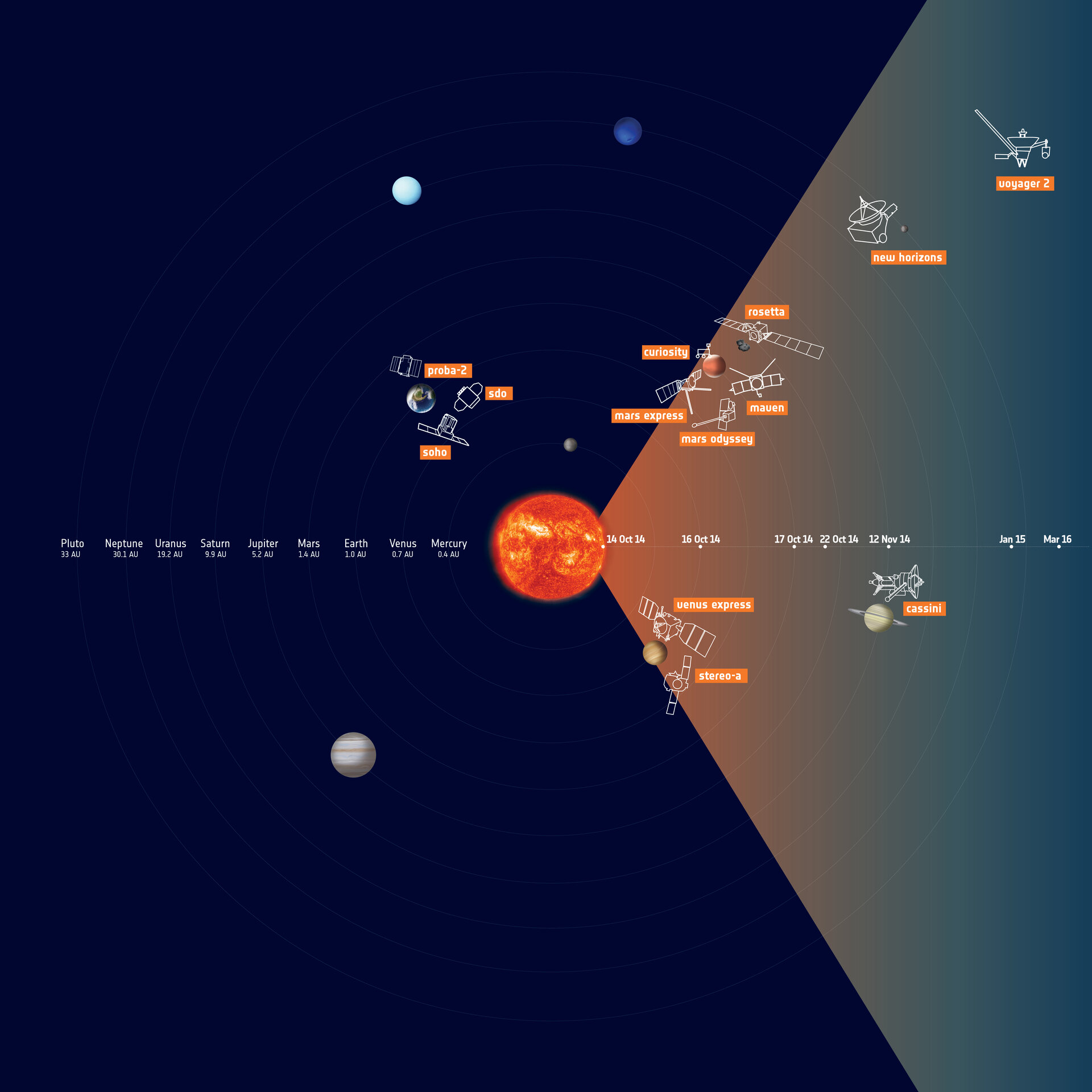
In the firing line
Thank you for liking
You have already liked this page, you can only like it once!
The location of various spacecraft during the Sun’s coronal mass ejection (CME) on 14 October 2014. The separations of the planets are not shown to scale; their distances from the Sun, shown on the left hand side, are given in astronomical units (AU) and reflect the distance at the time the CME measurements were made (for other planets the average distance is given). Rosetta and comet were at 3.1 AU from the Sun. The dates at which the spacecraft began to feel the effects of the CME are indicated on the right-hand scale.
Three Sun-watching satellites in Earth’s vicinity – ESA’s Proba-2, the ESA/NASA SOHO satellite and NASA’s SDO – captured images of the event, while the other spacecraft indicated were in the firing line and made in situ observations of, for example, an enhancement of the magnetic field strength, increases in the solar wind speed, and decreases in the influx of the galactic cosmic rays. NASA’s Stereo-A also captured images from its viewing position, while other data were recorded by ESA’s Venus Express, Mars Express and Rosetta, NASA’s Mars Odyssey and Maven orbiters and its Curiosity rover, and the NASA/ESA/ASI Cassini spacecraft. Although inconclusive, hints of the CME were also seen at NASA’s New Horizons and Voyager-2 three months and about 17 months later, respectively.
The CME propagated from the Sun at an angle of at least 116º (as defined by the detections made in the vicinity of Venus and Mars) with a speed of ~1000 km/s at the Sun to about 450–500 km/s at the distance of Saturn a month later.
-
CREDIT
ESA -
LICENCE
ESA Standard Licence
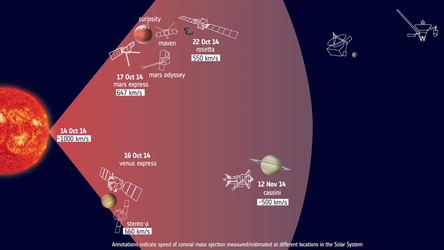
Tracking a solar eruption through the Solar System

Venus Express Mission and Spacecraft: Next Stop Venus
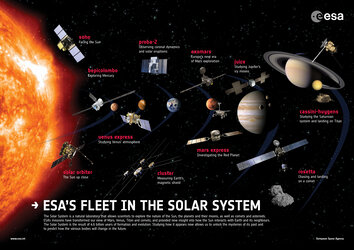
ESA's fleet in the Solar System poster 2017
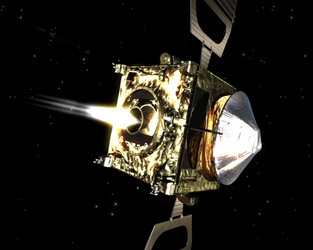
Artist's view of Venus Express main engine firing in space
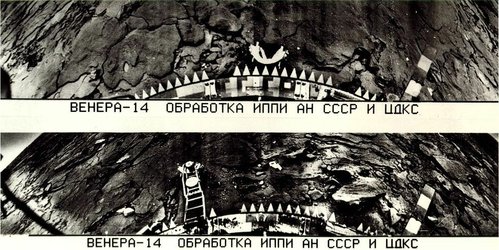














 Germany
Germany
 Austria
Austria
 Belgium
Belgium
 Denmark
Denmark
 Spain
Spain
 Estonia
Estonia
 Finland
Finland
 France
France
 Greece
Greece
 Hungary
Hungary
 Ireland
Ireland
 Italy
Italy
 Luxembourg
Luxembourg
 Norway
Norway
 The Netherlands
The Netherlands
 Poland
Poland
 Portugal
Portugal
 Czechia
Czechia
 Romania
Romania
 United Kingdom
United Kingdom
 Slovenia
Slovenia
 Sweden
Sweden
 Switzerland
Switzerland

























